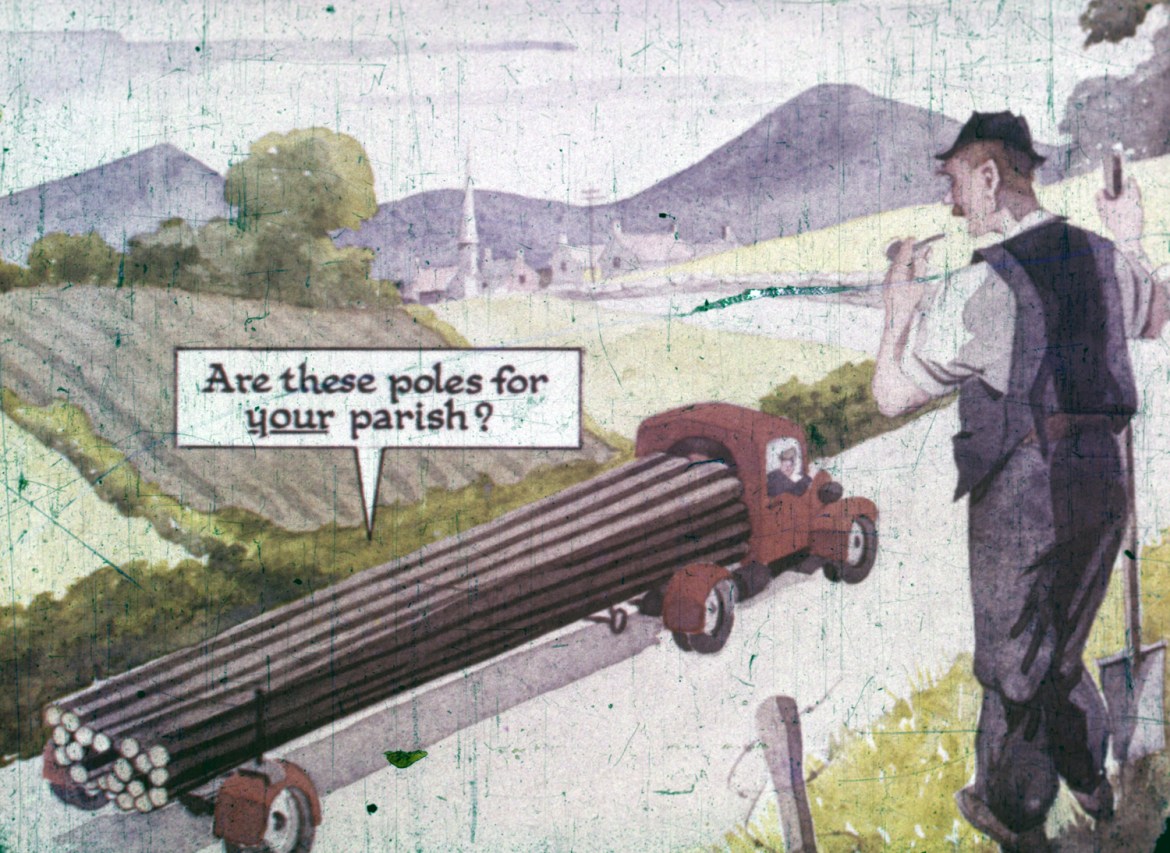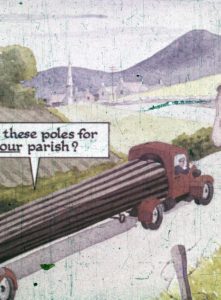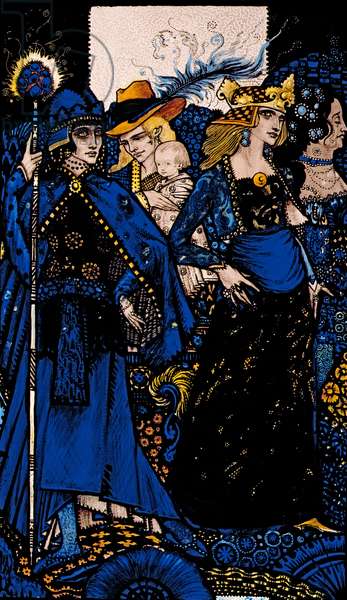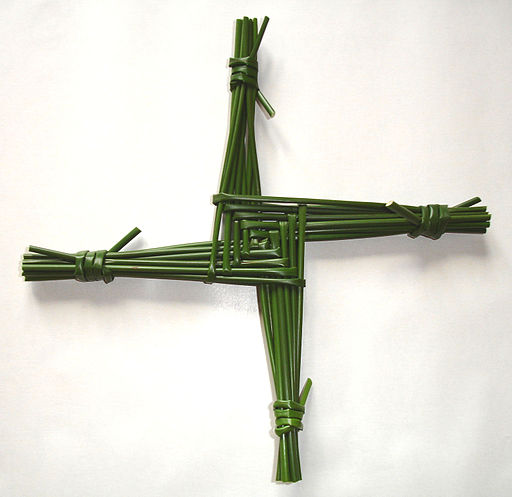by Hilary Kiely
On the 15th of January in 1947, the lights went on for the first time in Old Town in County Dublin. This was the inaugural switching on of electricity to launch the Rural Electrification Scheme. Houses and industry alike depended on candles, rushlights, and lanterns. Urban dwellers had already been wired to the tune of 250,000 users but farmers were still operating like it was 1899. The introduction of electricity was a huge leap forward for things like poultry farming with the introduction of such innovations as incubators for chicks and egg warmers. It was a huge leap for the home, too, with electric water pumps, kettles, ovens, and washing machines forever changing the day-to-day functioning of the household.
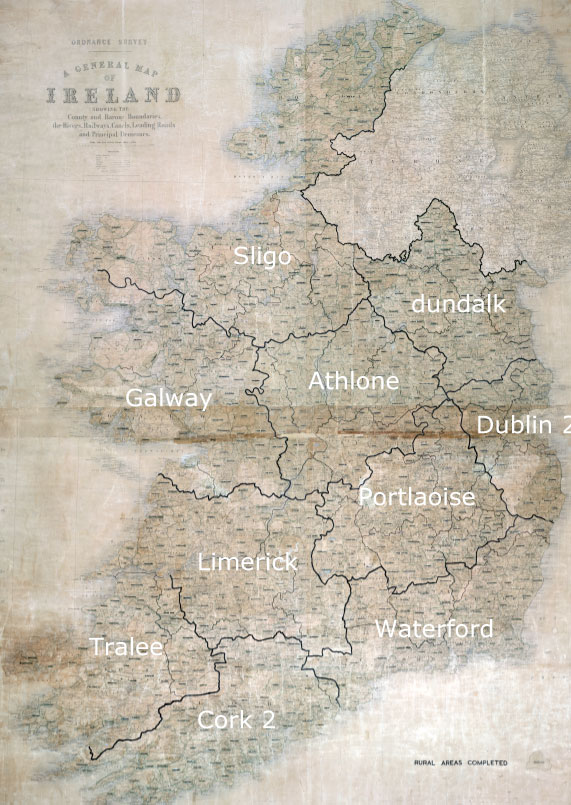
Up until the mid-1920s, the 40,000 homes that had electricity were supplied by a combination of private companies and local authorities. Ireland had the second lowest electricity consumption/supply in Europe. In 1925, the Shannon Scheme was launched after the passage of the Electricity Supply Bill, which allocated a huge 20% of Ireland’s national revenue at the time – £5.1 million – to the project. The Ardnacrusha hydro generation station was built on the banks of the River Shannon in County Clare. Next came the establishment of the ESB in 1927. The Irish Electricity Supply Board was one of the earliest national electricity systems to integrate the electricity supply chain, operating the generation, distribution, marketing, transmission, and sale of electricity. (1)
The Rural Electrification Scheme was a massive undertaking: 2 out of 3 Irish homes had no electricity. The roll-out took 30 years and involved 75,000 miles of lines, 1 million electricity poles, 100,000 transformers, and £140 million. (2) Localities often held a switching on ceremony attended by the press and local dignitaries. In 1954, there was a milestone ceremonial switching-on held at the Connemara cottage of revolutionary Pádraig Pearse. The only such ceremony attended by An Taoiseach Eamonn de Valera saw him throw the master switch, lighting up 30 houses in the neighbourhood. The completion of the roll-out in the area would bring electricity to 120 more homes within the following 2 months. (3) It was a long-looked for moment that was hoped would help stem the tide of emigration from the western Gaeltacht by bringing in greater economic opportunities with the electric current.
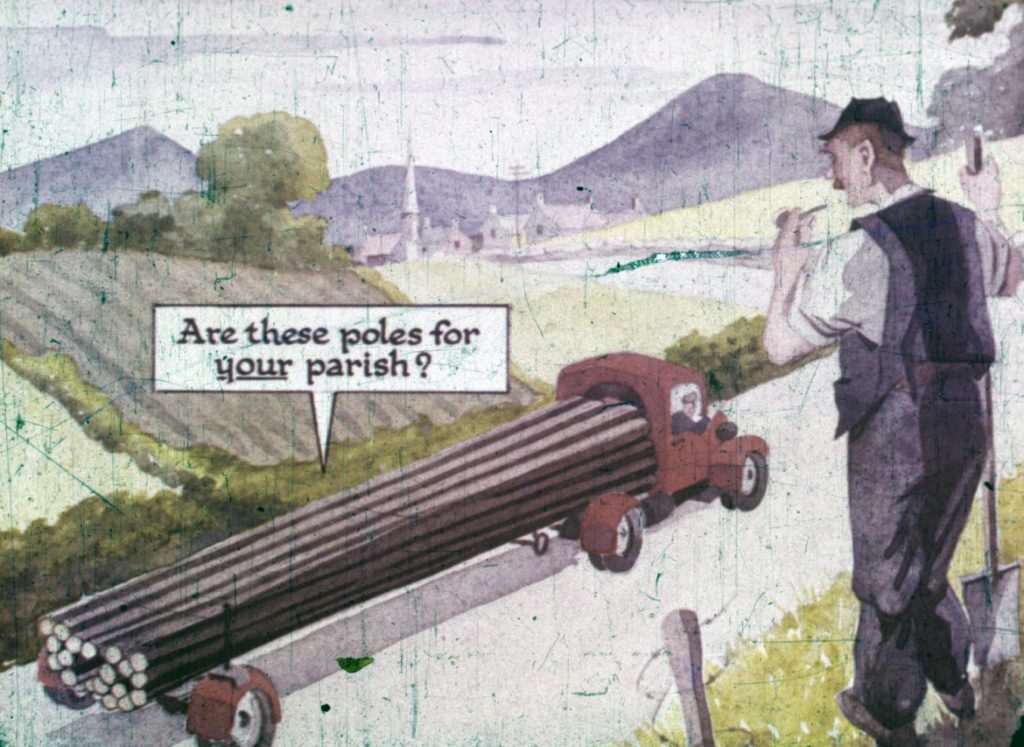
Check out this brilliant interactive map from the Electricity Supply Board archives to see when your home place got electrified!
- https://esbarchives.ie/test-ss-key-facts-page/
- https://esbarchives.ie/key-rural-facts/
- “E.S.B. Current reached Rosmuc”, Connacht Tribune, May 1, 1954
More on Pádraig Pearse and his cottage in Rosmuc, Connemara here.
Further reading:
Michael Shiel, The Quiet Revolution (O’Brien’s Press, 2003)
PJ Cunningham and Dr Joe Kearney, eds, Then There Was Light (Ballpoint Press, 2016)
